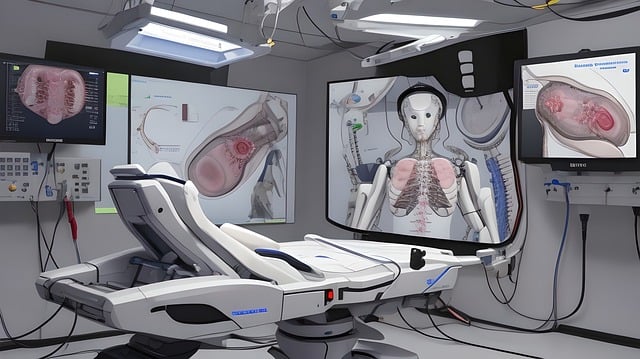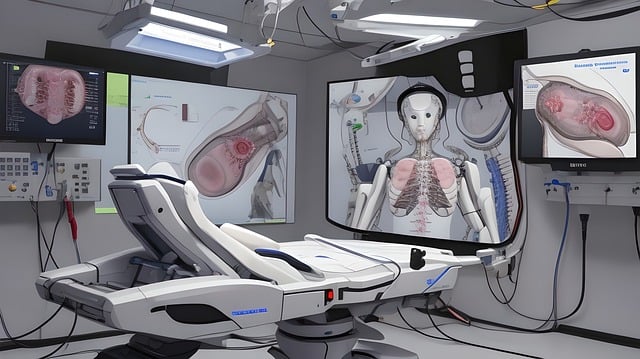The Rising Phenomenon of Auto Trading Bots: Revolutionizing Investment Strategies
In the ever-evolving landscape of financial markets, technology has consistently played a pivotal role in shaping investment strategies. Among the innovations that have gained significant attention of late is the emergence of auto trading bots. These sophisticated algorithms promise to automate trading processes, execute trades at optimal times, and potentially yield higher returns. In this article, we will delve into the details of auto trading bots, their advantages, potential downsides, and future prospects.

Understanding Auto Trading Bots
Auto trading bots are software programs designed to buy and sell securities on behalf of traders, based on pre-defined criteria. They utilize algorithms that analyze market data, recognize trading opportunities, and execute trades according to a set of rules. This technology can operate in various markets, including forex, stocks, and cryptocurrencies.
How Do Auto Trading Bots Work?
At their core, auto trading bots employ algorithms that utilize data and computational power to perform trades. Here is a basic breakdown of how they operate:
- Data Analysis: The bots analyze a wealth of market data, from price movements and volume to historical trends and real-time news.
- Signal Generation: Based on the analysis, the bots generate trade signals that indicate when to buy or sell an asset.
- Execution of Trades: Once a signal is generated, the bot executes trades automatically, without the need for human intervention.
- Monitoring and Adjustment: Bots can continuously monitor market conditions and adjust their strategies accordingly based on their algorithms.
Types of Auto Trading Bots
There are several types of auto trading bots, each designed for specific use cases:
- Market Maker Bots: These bots provide liquidity to the market by placing buy and sell orders, profiting from the spread.
- Arbitrage Bots: These bots capitalize on price discrepancies across different exchanges to earn a risk-free profit.
- Trend Following Bots: These bots analyze market trends and execute trades based on momentum, aiming to follow prevailing market directions.
- Mean Reversion Bots: They operate on the principle that asset prices will revert to their average over time, executing trades based on this idea.
The Advantages of Using Auto Trading Bots
The adoption of auto trading bots is on the rise, and for good reason. Below are some of the key advantages that these automated systems offer.
1. 24/7 Trading
One of the most significant advantages of auto trading bots is their ability to operate continuously, 24/7. Unlike human traders who need to rest, eat, or tend to personal matters, bots can monitor the markets around the clock. This means that numerous trading opportunities can be seized without delay, which is especially beneficial in volatile markets.
2. Lower Emotions, Higher Discipline
Emotion-driven decisions often lead to losses in trading. Auto trading bots rely on algorithms and predefined rules, eliminating emotional trading decisions. This increased discipline allows for a more systematic investment approach, aligning operations with strategic goals rather than fleeting emotions.
3. Speed and Efficiency
In trading, speed is crucial. Auto trading bots can process vast amounts of data and execute trades in mere milliseconds. This speed allows them to capitalize on short-term market fluctuations that might go unnoticed by human traders.
4. Backtesting Capabilities
Most auto trading bots come equipped with backtesting capabilities, allowing traders to test their strategies using historical data. This way, they can refine their approaches before committing real capital, leading to more informed decision-making.
Potential Downsides of Auto Trading Bots
While auto trading bots present numerous advantages, they also come with their share of drawbacks. Investors must weigh these factors carefully.
1. Over-Reliance on Technology
With the growing reliance on auto trading bots, traders may become overly dependent on technology and lose their market intuition. Algorithms can make errors, especially in unforeseen market conditions or black swan events, leading to significant losses.
2. Limited Flexibility
Even the most sophisticated algorithms may struggle to adapt quickly to sudden market changes unless specifically programmed to do so. Bots operate within predefined parameters and may fail to respond appropriately to unexpected events, negating the benefits of human foresight.
3. Costs and Fees
Many auto trading bots are not free. They often come with subscription fees or performance-based charges that can cut into trading profits. Proper financial planning is crucial to account for these expenses when considering using a bot.
4. Security Risks
As with any online financial service, there are inherent security risks. Auto trading bots that require access to user accounts can expose traders to potential hacking or fraud, making it essential to choose reputable platforms and ensure account security.

Considerations for Choosing an Auto Trading Bot
Choosing the right auto trading bot can be the difference between success and failure in automated trading. Here are some important considerations:
1. Reputation and Reviews
Before selecting a bot, it's crucial to do extensive research into its reputation. Reading reviews and feedback from other users can provide insights into the bot's reliability and performance.
2. Regulatory Compliance
Ensure the auto trading bot operates within the regulatory framework of the region in which you are trading. Regulatory compliance can offer additional security and peace of mind.
3. User-Friendly Interface
A bot's interface should be intuitive and straightforward. Users should be able to access analytics, modify settings, and understand functionalities without a steep learning curve.
4. Customization Options
The ability to tailor strategies according to personal investment goals is essential. Look for a bot that offers flexibility in strategy customization while maintaining robust algorithmic capabilities.
Future Prospects of Auto Trading Bots
As artificial intelligence and machine learning technologies continue to advance, the capabilities of auto trading bots are expected to expand. The future may see improvements in predictive analytics, allowing these bots to foresee market trends with higher accuracy.
1. Enhanced Machine Learning Algorithms
With the integration of enhanced machine learning algorithms, future auto trading bots could potentially adapt and learn from market conditions in real time. This adaptability could minimize risks associated with unforeseen market changes.
2. Increased Adoption in Retail Trading
As technology becomes more accessible, we can expect a surge in the adoption of auto trading bots among retail traders. This democratization of technology will likely lead to more diverse investment strategies and a more competitive trading environment.
3. More Sophisticated Risk Management Tools
Future auto trading bots are expected to incorporate more advanced risk management features, enabling traders to protect their investments better and manage exposure to market volatility.
Conclusion: Navigating the World of Auto Trading Bots
The emergence of auto trading bots represents a significant shift in trading methodologies, offering both opportunities and challenges for traders. As investment strategies continue to evolve, it is imperative for investors to remain informed, conduct thorough research, and understand both the potential benefits and risks associated with these automated systems.
Ultimately, while auto trading bots can enhance trading efficiency and potentially yield substantial returns, **traders must exercise due diligence in selecting the right tools and developing a robust strategy that aligns with their financial goals.** The world of auto trading is undoubtedly intriguing, but success in this domain relies on a balanced understanding of technology, market dynamics, and personal investment philosophies.